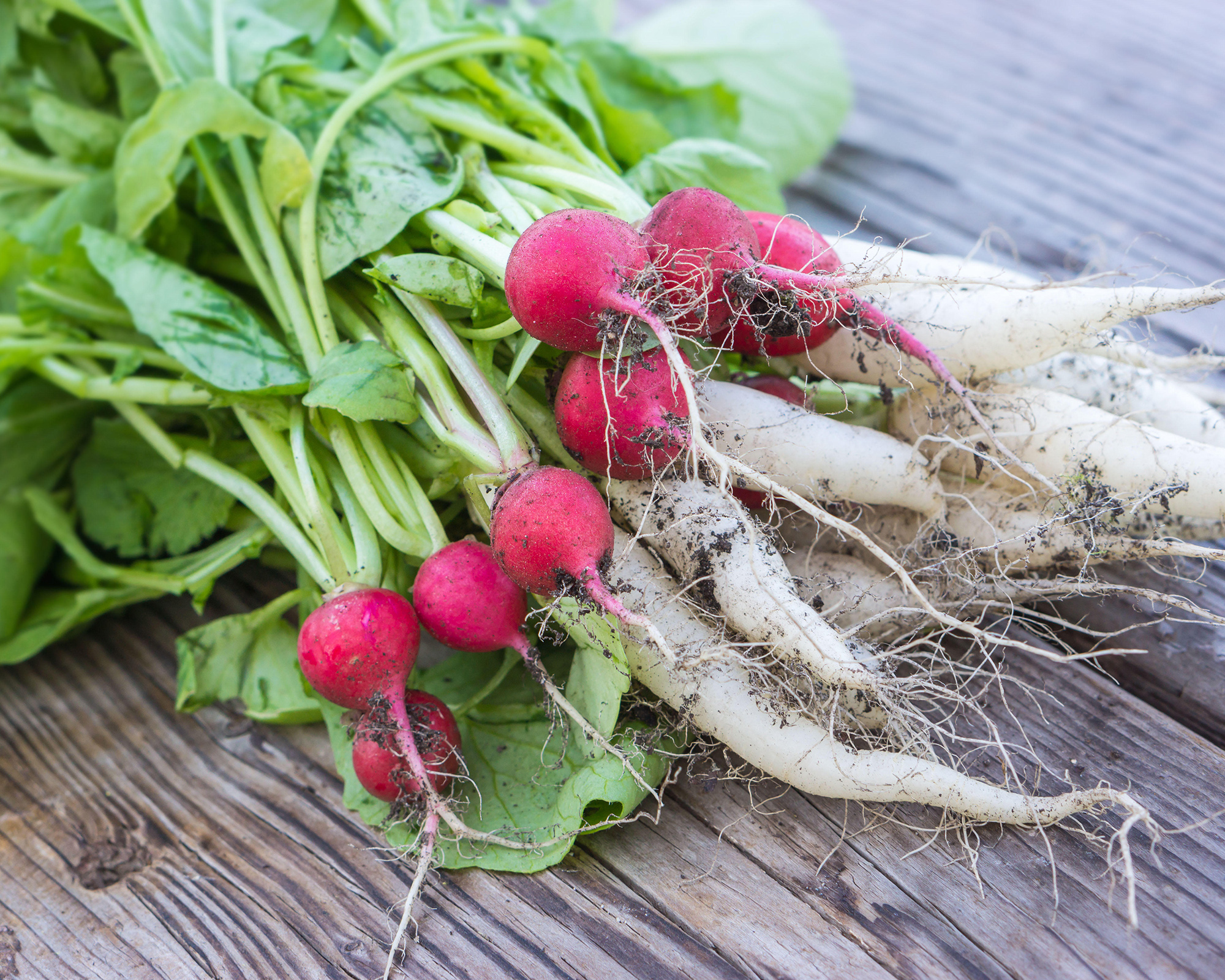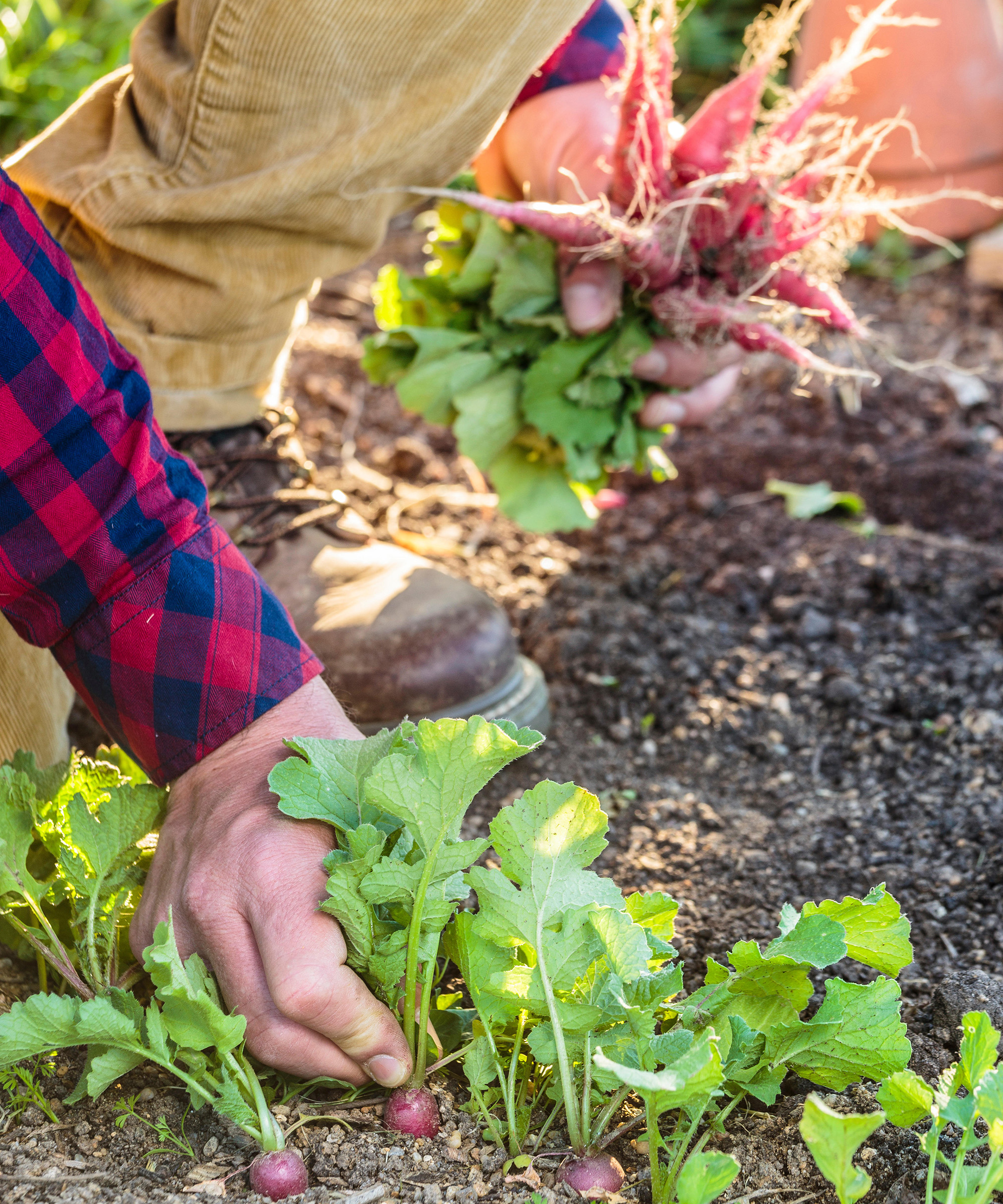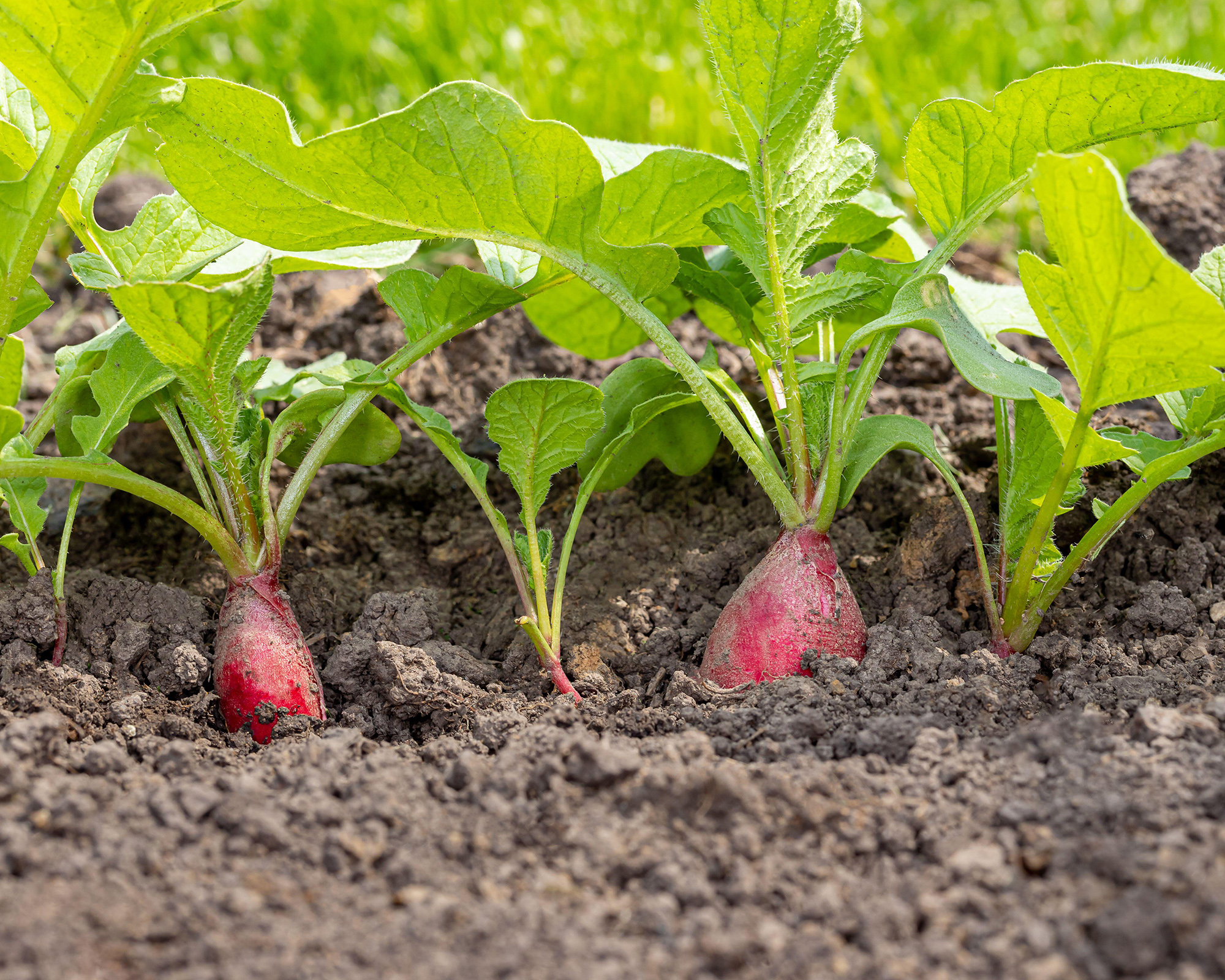When to harvest radishes: simple tips for picking this lovely root veg
Learn when to harvest radishes to be guaranteed the tastiest and crunchiest crop


Knowing when to harvest radishes is an essential part of growing this deliciously crunchy root vegetable. Radishes are a simple crop: they're one of the fastest growing vegetables and don't need much specialist care or attention.
But in order to ensure you get the tastiest harvest when growing radishes, it's important to know the signs of a ripe and ready radish. We've got lots of advice that will help you notice when to start picking.

Harvest radishes when they're still young for a fresher taste
Simple tips on when to harvest radishes
Radishes are one of the easiest vegetables to grow from seed. They germinate quickly and are ready to eat in just a few weeks after they've been planted, making them a great addition to your raised garden bed ideas.
But what if you can’t wait for that peppery crunch? Rachel Morgan, horticulturist at You Garden, suggests being a little cautious with harvesting all your radishes at once. 'Before you lift your whole crop, check the size of your radishes,' Rachel says. 'You can do this by removing just the top layer of soil around one of the plants in the row.'
'Radishes are ready to harvest once they've grown to about an inch (2.5cm) in diameter. If you are happy that the size is correct, pull, wash and eat fresh, when crunchy and delicious.'
Harvest summer radishes by taking hold of the top growth and gently easing them out with a fork or trowel. Eat them soon after harvesting for maximum freshness and crunch.
Winter radishes can be left in the ground and dug up as required, or lifted in late fall and stored.

Check the size of your radishes by moving the top soil
How do you store radishes after harvesting?
Now you know when to harvest radishes, you'll want to make sure you keep them fresh for as long as possible. Once you've harvested your radishes, you can place them in a container, seal it and put it in the refrigerator. Radishes will stay fresher for longer when kept cold – usually for about a week.
Before storing your radishes away, it's also a good idea to trim off the greens, as they're edible too.

Don't forget about using the radish greens in your recipes
What happens if you pick radishes too late?
If left to grow too large, radishes can become woody and inedible. Increasingly warm temperatures can lead to the plant bolting too. That's why it's a good idea to stay on top of your harvesting and get your radishes out of the ground while they're still young.
One of our top tips for vegetable gardening for beginners is to try and get a continuous harvest of fast-growing crops like radishes so that you can enjoy them over a longer period of time. To do this, simply plant radishes in your kitchen garden every few weeks and harvest whenever you'd like to add a fresh crunch to your meals.

Radish greens are both edible and delicious in salads
Can you eat the radish greens and leaves once harvested?
When it comes to picking for the pot, remember radish greens are edible in their entirety. Their texture is coarse though, so they don’t work well in salads unless they’re baby leaves.
Young and tender radish leaves can be cooked like any other greens. You can also whizz them into a delicious pesto.

Freelance writer and author Flora Baker is a keen amateur gardener and houseplant enthusiast. Her small garden in South London is a constant work in progress as she gets to grips with snail prevention, DIY trellises and what to plant in shady spots overrun with ivy.
